Ayubowan! Vanaakum! Dear friends,
Thank you for joining the Sri Lanka Wildlife Conservation Society (SLWCS) mailing list over the years. This is our 2nd newsletter for 2008. We currently have 3157 registered users.
—————–
WILDLIFE NEWS: Rich in biodiversity – poor in protection and conservation
The SLWCS conducted biodiversity surveys in several ecologically important areas in the western, northern and eastern provinces. The following is a brief summary highlighting some of the important outcomes of these surveys.
Kalpitiya-Karaitive-Puttalam Lagoon and Coastal Wetland Complex
Five different habitat types were identified based on the floristic composition including 4 aquatic and 3 terrestrial habitats. FLORA: A total of 168 plant species belonging to 43 families occur in the five habitat types. Among them there are 4 endemics, 3 nationally threatened and 4 invasive species. The diversity is greatest in the home gardens, and lowest in the salt marshes. Among the plant forms, shrubs and trees predominate. FAUNA: A total of 278 vertebrates were recorded from the KKP. The vertebrates include 34 species of fish, 6 species of amphibians, 22 species of reptiles, 200 species of birds and 17 species of mammals. Among the invertebrates 47 are butterflies, 8 species are dragonflies and 3 are crustaceans. Among the recorded species, 11 are endemic, while 2 are globally threatened and 39 are nationally threatened. NEW RECORDS: A flock of 17 Great Knots (Calidris tenuirostris) were recorded once at a tidal mudflat at southern Uchchamunai. This was the first large flock recorded in Sri Lanka.
The Eurasian Oystercatcher (Haematopus ostralegus) was found to occur in the northern parts of the lagoon. The other rare observations are of the Spotted Redshank (Tringa erythropus) and Sanderling (Calidris alba) which were recorded in the off-season. Interestingly, the Ruff (Philomachus pugnax) which is considered a common wader was recorded only once. First year juveniles: First year juveniles that remain without migrating back to their breeding grounds in the spring are known to stay in Bundala and Palatupana coastal wetland complexes in the south of Sri Lanka. This study revealed that 12 such species remain in KKP. They remain restricted to parts of the lagoon, which have extensive tidal mud flats. Almost all first year juveniles had attained their breeding plumage by September. Among them, the breeding plumage of the Little Stint (Calidris minuta), the Lesser Sand Plover (Charadrius mongolus), the Curlew Sand Piper (Calidris ferruginea) and the Golden Plover (Pluvialis fulva) is very distinct. The juveniles of the Little Stint (Calidris minuta) and Lesser Sand Plover (Charadrius mongolus) stay back in large numbers. This emphasizes the importance of carrying out the study during the migratory and non-migratory seasons.
Bellanwila Attidiya Sanctuary
Five main vegetation types were identified within the Bellanwila-Attidiya sanctuary: Marshland vegetation, Annona dominated woodland vegetation, Open water vegetation, Canal bank vegetation and Home garden vegetation. A comparison of data collected from various surveys since 1982 with the SLWCS 2005 survey data shows a reduction in the total number of species including endemic species for most of the taxonomic groups while exotic and pest or invasive species have increased tremendously. From a total number of 345 species recorded in the Sanctuary 10 years ago the number of species has declined to 168 by 2005.
Bandaragama Wetlands
A total of 117 species of vertebrates and 41 species of butterflies and dragonflies including 9 endemics were recorded at the Bandaragama wetlands. No previous data exist for this wetland.
Cheap mircette and Seruwila
The surveys conducted by the SLWCS were the first surveys ever done in the Seruwila area. The surveys identified 4 major habitat types in the area: Tropical dry evergreen forest, Scrub-forest, Wetlands Including tank and mangrove ecosystems, Human modified or disturbed habitats (archeological reserves, paddy fields, Chena lands, fire disturbed, demilitarized zones, and areas grazed by cattle). A total of 148 species of vertebrates and 57 species of butterflies including 4 endemics were recorded during the field survey.
Lunugala
The surveys conducted by the SLWCS were the first surveys ever done in Lunugala area. Four distinct habitat types were identified: savanna grasslands dominated with Aralu (Terminalia chebula), Bulu (Terminalia bellerica), Nelli (Phyllanthus emblica,) and Deminiya (Grewia demine) tree species, dry mixed evergreen forest, wet evergreen forest dominated by Dipterocarpus species and human modified habitats containing tea and rubber estates, paddy fields, chena lands, disturbed habitats (clear cut forests without any cultivation or vegetation) and silvicultural land (plantation forest consisting of mostly Pinus, Eucalyptus and Canarium (turpentine) species. A total of 82 species of vertebrates, 57 species of butterflies and 8 species of dragonflies were recorded during the field surveys.
Lahugala
The surveys conducted by the SLWCS at Lahugala were some of the first studies that have been done in this area which has been mostly overlooked due to its remote location as well for the security issues prevalent in the area for the past 25 years. Seven habitat types were identified in the Lahugala area: Tropical Dry mix forest, Scrub-forest, Scrub-grassland, Wetland, Grassland, Riverine forest, and Human modified or disturbed (Paddy field, Chena, fire or open areas grazed by cattle). A total of 117 species of vertebrates, 81 species of butterflies and 5 species of dragonflies were recorded during the field surveys.
Conclusion
Almost all of the areas that were surveyed show that these areas still have impressive numbers of species that are indigenous and endemic to the island. Unfortunately all of these places without exception are under serious threat and pressure from unregulated exploitation by the local communities and by various development activities. In addition illegal loggers from outside areas are an ongoing threat to some of these highly diverse habitats.
Currently the Society is carrying out similar surveys in the recently liberated Eastern Province to gather data to assess the impact of over 25 years of human conflict on biodiversity A?a??a?? especially elephants, dugongs and sea turtles in the area.
The Saving Elephants by Helping People Project (SEHP) A?a??a?? celebrating 10 years as the longest operating successful participatory effort to mitigate human elephant conflicts in Sri Lanka.
Today, human elephant conflict defines the relationship between people and elephants in Sri Lanka. In 1997, the Founder President of SLWCS, Ravi Corea based on a survey he conducted established the first ever community-based HEC resolution project. This landmark community-based project called A?a??A?Saving Elephants by Helping PeopleA?a??A? (SEHP) in Sri Lanka, the first of its kind was born, exploring ways to resolve the increasing threats associated with human-elephant conflict and its close relationship with poverty, through community development, capacity building and research. The SEHP project tested an innovative concept, which was to fence elephants A?a??E?OUTA?a??a?? of human settlements rather than A?a??E?INA?a??a?? protected areas. This concept takes into consideration that 70% of the Sri Lankan elephant population ranges outside the national parks. The project pioneered the use of solar-powered electric fences to protect homesteads and crops from elephant raids. It uses a management model that fully integrates community participation to HEC resolution.
Today the SEHP Project has achieved the following: A?A? Poverty Reduction: The fences have helped to raise the socio-economic standards of these villages by significantly reducing crop raiding by elephants. Prior to the introduction of solar powered electric fences, 70% of the land was left uncultivated due to elephants frequently raiding the fields. After the fences were introduced, elephant raids have significantly reduced in some villages by 100% enabling villagers to cultivate all their fields. They are now cultivating seasonal and annual crops, which they could not do before. Help alleviate poverty through increased income. Approximately 7 hours per day per farmer has been saved, which used to be spent on protecting crops in the night. Villagers can sleep at night now or use that time for other activities. Villagers used to spend on average Rs.5,400 (< $50) per annum to purchase kerosene oil, firecrackers, flashlight batteries and bulbs to protect crops in the night. Since the SEHP project was implemented, the average monthly cost per household to maintain the electric fence is Rs.180 (>$2) per year. Therefore the average household is saving Rs.5,220 (approx $48) per annum.
The environmental awareness of some communities has increased by an average of 23%. In two villages, 100% claim their wellbeing and safety has improved since the electric fences were erected. Feedback from villagers shows their mobility, especially after nightfall, has increased due to the security from the fences. The social life of villagers has vastly improved, increasing their quality of life. Reduced stress due to the lower risks of elephant attacks. Children do not have to miss school because of elephants and potential damage or deaths in the village. Biodiversity Conservation: The alleviation of HEC has made farmers more supportive of elephant conservation. SEHP has made it possible for humans and elephants to co-exist in areas, where they share space by minimizing the violent interactions. Agriculture is one of the major drivers of biodiversity loss in many ecosystems. With a growing human population to feed, the Sri Lanka governmentA?a??a??s ongoing efforts to increase agricultural production will have profound impacts on biodiversity and associated ecosystem services. The SEHP initiative promotes that for sustainable development, it requires that biodiversity conservation and agricultural production are reconciled. The various SEHP programs are introducing pioneering and innovative land use practices towards achieving this objective. Visit our website to find out more information on these initiatives: A?A? Field Scouts Program (FSP) A?A? Project Orange Elephant (PoE) A?A? Home Garden Development Project (HGDP) A?A? Habitat Enrichment Project (HEP), English and Computers to Rural Schools Project, Tourism Infrastructure Development Projects.
—————–
SLWCS DEVELOPMENTS AND PROJECTS:
SLWCS is pleased to announce the following developments (for further details on any of these projects, please email info@slwcs.org or go to our website www.slwcs.org
The President of SLWCS (Ravi Corea) was appointed the HEC Task Force Coordinator for the IUCN-Asian Elephant Specialist Group (AsESG). This was in recognition for all the work that both he personally and SLWCS have undertaken to promote community integrated human elephant conflict (HEC) resolution, poverty alleviation, sustainable land use, and wildlife conservation.
The Operations Director of the Society (Chandeep Corea) was elected as the Editor in Chief and Executive Committee Member of the Geo Informatics Society of Sri Lanka, which will soon become the National Geo-Informatics Institution.
The Society was appointed as consultant to UNESCO-Sri Lanka, and undertook a Rapid Ecological and Resource Utilization Survey (RERU)1 in both Seruvila (now accepted as a World Heritage Site), and more recently, Lunugala in the Badulla District. This was the first ever ecological, socio economic and resource utilization survey ever conducted in the area, which is one of Sri LankaA?a??a??s 9th poorest GN Divisions . SLWCS also helped UNESCO organise several round table conferences following the survey to discuss the findings and development plans with stakeholders.
The SLWCS have beenA?A? hired as consultants by the International Elephant Foundation (IEF) and flew to Indonesia in March/April, to conduct HEC training for the Bengkulu Natural Resources Conservation Department (BKSDA). Since its inception the Society has been developing a toolbox for HEC Mitigation. An integral component of this is the assumption that the protection and management of natural resources requires active community participation for sustainable conservation and community development. A small team from SLWCS went to Bengkulu in Indonesia to help them with their HEC Mitigation project and to train a team from the BKSDA in Community Participation approaches and practical GIS application for community based research. The trip was a huge success.
Presentations: The Society presented four technical papers (click here to see the papers click here to see the papers at the International Riverscapes Conference held in Colombo, which were very well received. The 4 papers dealt with wetlands conservation, results and issues as a result of several biodiversity and socio-economic baseline surveys that were recently conducted, and about a possible new locality record for the endemic freshwater fish species, Channa orientalis. An important lesson learned by all the participants at the conference was the need to adopt integrated landscape level management of riverscapes for long term conservation. The Society extended an invitation for conference participants, (which is now extended to all of our readers) to visit our project sites in Wasgamuwa, Knuckles Mountain foothills, Lahugala and Somawathiya to work with the SLWCS on collaborative research and conservation projects.
Collaborations: The Society has been invited by both the Department of Wildlife Conservation and the Mahaweli Authority of Sri Lanka to develop landscape level management strategies for the mitigation of HEC in the Central and North Central Provinces.
Nominations: The SLWCS was recently nominated for the UNDP Equator Net Award and for the BBC World Challenge 2008 award. We are all waiting in anticipation to see what the outcomes of these nominations would be.
Rapid Ecological and Resource Utilization (RERU) Survey A?a??a?? A thorough ecological, biodiversity and socio/economic assessment of a predefined area, over a short period (approximately 6 days on average), along with suggestions for improvements and actions that need to be taken for the improvement and development of the area.
—————–
Purchase danazol 200mg OTHER PROJECT UPDATES:
Wasgamuwa A?a??a?? The SLWCS established their first project in Wasgamuwa, a village in the Central Province over a decade ago, with the A?a??A?Saving Elephants by Helping PeopleA?a??A? (SEHP) project, which fence elephants OUT of villages rather than IN reserves, using solar powered electric fencing. This project still remains the most successful participatory HEC resolution program in Sri Lanka today. The communities are still working together to maintain their fences. Unfortunately, due to the security situation in Sri Lanka, the number of international volunteers has declined drastically since February, so sadly the main field research site at Wasgamuwa is operating on a skeleton staff. The locally trained Field Scouts have continued to collect data on the fences, HEC, and socio economic issues without help from volunteers. Through this important research SLWCS have discovered that elephant raids have reduced by 100% in some areas, and approximately 7 hours per day of farmers time has been saved, and Rs.5,500 (approx $50) per annum saved from not having to purchase paraphernalia to chase away crop raising elephants, as well as saving thousands of rupees previously spent on repairs to property damaged by elephants. We have just been informed that two volunteers will be joining our Research Team at Wasgamuwa in July, which is great news!
SLWCS made an exciting discovery in one of the field sites, of a possible, but not confirmed presence of an endemic fish species (see the presentation A?a??A?A Fish StoryA?a??A? above), and would like to encourage researchers and conservation enthusiasts to join the team in undertaking further studies of the area. SLWCS is also keen to find funding to continue the good work in the area, by carrying out the Habitat Enrichment Project (HEP), as an additional means of deterring elephants and alleviating poverty, by planting citrus and other crops varieties that are known to be not preferred by elephants.
Irrigasulpotha Camp Site (at Wasgamuwa) A?a??a?? SLWCS have renovated one of the smaller SLWCS field camp sites, building a shower/toilet facility, which is now available for hire for Eco, elephant and research tours. Please contact info@slwcs.org for more information.
Lahugala A?a??a?? SLWCS have been working with communities in Lahugala, in the Ampara District since 2004. These villages consist of poor farming and Tsunami displaced communities, largely affected by HEC. Following the success of the SEHP project at Wasgamuwa, SLWCS has emulated the same project in Lahugala, and are working with the community, having erected a solar powered electric fence, and are successfully working to help the people maintain it. SLWCS have also conducted a reforestation project in a Chena affected area, which will prevent soil erosion, improve the soil fertility and provide an income for families. SLWC is also providing plants (fruits, vegetables, medicinal, herbs, spices, fodder, and timber species) to poor families to develop their home gardens, donated computers and most recently, a wheelchair to a family with a disabled child.
Moragahakanda/Kaluganga A?a??a?? SLWCS was asked by the Department of Wildlife Conservation (DWC) and the Mahaweli Authority to conduct a RERU survey of the Moragahakanda/Kaluganga area, to identify the HEC, wildlife, and social status of the area, particularly as this area is part of the Mahaweli System F irrigation project. It is, extremely important for SLWCS to report on and advice both these agencies to develop a suitable plan for the successful resettlement of the areasA?a??a?? wildlife and people. Unfortuneatly a severe lack of funding has prevented us from launching full scale investigations but we have initiated baseline data collection. We would like to invite volunteers who can donate a 3-4 days of time cyclicaly with us to help in the collection of information. We have a team from the Peradeniya Zoological Society joining us in July. Email us at volunteer@slwcs.org for details.
IEF – BKSDA, Indonesia Consultancy – Since its inception the Society has been developing a toolbox for HEC Mitigation. An integral component of this is the assumption that the protection and management of natural resources requires active community participation for sustainable conservation and community development. One of our long-time friends and supporters, the International Elephant Foundation requested the SLWCS to help them with their HEC Mitigation project in Bengkulu, Indonesia. Nishantha and Chandeep went to Bengkulu to train a team from the BKSDA in Community Participation approaches and practical GIS application for community based research.
Coast Conservation by Helping People (CCHP) – Eastern Sector Survey – This project is evolving out of our SEHP and WCP projects and focuses on the conservation of coastal and marine resources. Currently we are in the baseline survey phase. We have completed the work on the North West Coast (www.slwcs.org/projects/kalpitiya) and are currently establishing a similar survey at selected sites along the East Coast from the Kumbukan Oya to Mahaweli Delta. The Eastern Province of Sri Lanka is being rapidly developed after being liberated from terrorists and there is an urgent need for baseline biodiversity and resource utilization data.
GIS – While the society has always used GIS in its projects, the 2007/2008 period has seen the program expand phenomenally. After Chandeep was awarded a scholarship for GIS training in the USA in 2007, the Society received over US$300,000 worth of Imagery and Software from ESRI and SPOT Image through the Society for Conservation GIS (SCGIS) and Google Earth Pro from a Google Conservation Grant. The SLWCS-SCGIS and the Geo-Informatics Society of Sri Lanka (GISSL) conducted a successful short course and symposium on Conservation GIS and is planning to follow it up with an advanced course and 1 day GPS and GIS practical use workshops and is also organizing the 5th Annual National Symposium in July 2008. The SLWCS work is being featured by the Planet Action initiative during the 2008 ESRI User Conference under the theme “Human Dimensions & Habitation”. Additionally the GIS section of SLWCS, called the Center for Conservation GIS (c2GIS) has been producing maps to support the research and community development work and been looking at sub-village land use change analysis (starting with Lahugala with funding support from CIDA). We are also establishing Disaster Management, Risk Reduction and Emergency Response systems for deployment in Sri Lanka and have been presenting our work at numerous national symposia.
Finance – This year most of our funding has come from the Canadian International Development Agency for our projects in Lahugala and Pottuvil area (home gardens, reforestation and solar powered electric fencing). Furthermore, we received funding from UNESCO for the RERU surveys in Seruvila and Lunugala, and have recently received funds from Ocean Park Conservation Fund in Hong Kong for our Coast Conservation by Helping People (CCHP) project. It has been a difficult year in terms of funding and running our projects, as we have only had 3 volunteers in 2008, whereas we had close to 50 in the same period last year (Jan-Jun 2007). So we need further funds to carry us through to the end of the year, in order to carry out our important elephant research, sustainable community development, social and biodiversity survey projects. The unprecedented near 30% inflation and high taxation have really hit us hard as we are working on funds pledged prior to such steep increases. We have been pursuing raising a US$1m trust fund -where the interest can be utilized for operational stability in the long term. Even the smallest contributions to this will help in securing the future of the Society, which will ensure its continued efforts to develop sustainable solutions to conserve Sri LankaA?a??a??s endangered wildlife.
Logistics – As mentioned, petrol and diesel prices have gone up considerably in the last quarter, and 450% in the last 3 years and diesel (most of our vehicles run on diesel), is now Rs70 per liter. This has hugely affected SLWCS budgets and therefore its field work. It has become increasingly costly to maintain the vehicles and to run projects because of these escalating expenses.
Symposia, Forums and Achievements of SLWCS We have started using Google Docs to collaborate on multiple proposals. Please see Please see for SLWCS Achievements in English and Tamil
The Tamil font can be download by clicking here. We are working on Sinhalese and Tamil translations of most of our work. We have also started to organize division and district level exhibitions and meetings for discussion of lessons learned, information gathered and practical ways forward.


 Devanmpiyathissa in the second century BC. This is said to be the location the king married princess Vihara Maha Devi. The foundations of the A?a??A?Magul maduwaA?a??A? where the wedding ceremony took place can still be seen in the vihara premises. The entire Vihara complex had covered an extent of around 10,000 acres where ruins of a palace, moonstone, monastery, bo-maluwa, stupas, ponds etc. are found scattered all over. The moonstone here is said to be unique in the country as this is the only location where elephants are carved with their mahouts in the moonstone.
Devanmpiyathissa in the second century BC. This is said to be the location the king married princess Vihara Maha Devi. The foundations of the A?a??A?Magul maduwaA?a??A? where the wedding ceremony took place can still be seen in the vihara premises. The entire Vihara complex had covered an extent of around 10,000 acres where ruins of a palace, moonstone, monastery, bo-maluwa, stupas, ponds etc. are found scattered all over. The moonstone here is said to be unique in the country as this is the only location where elephants are carved with their mahouts in the moonstone.![]()








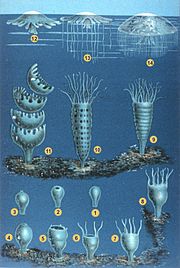
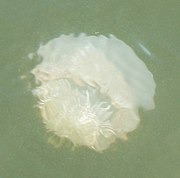






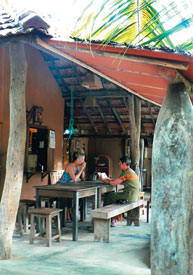


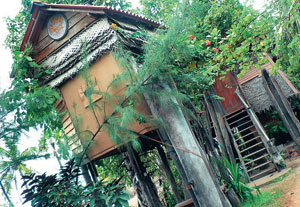
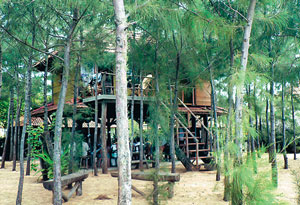


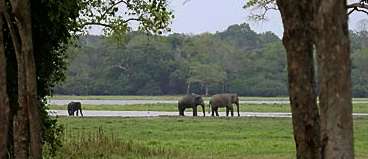
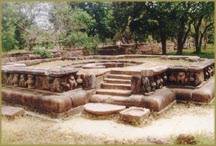
 Arugam Forum
Arugam Forum Arugam Photo Galleries on Picasa
Arugam Photo Galleries on Picasa Old Website
Old Website Press Coverage
Press Coverage Surf Forecast for Arugam Bay
Surf Forecast for Arugam Bay
TODAY’s Comments